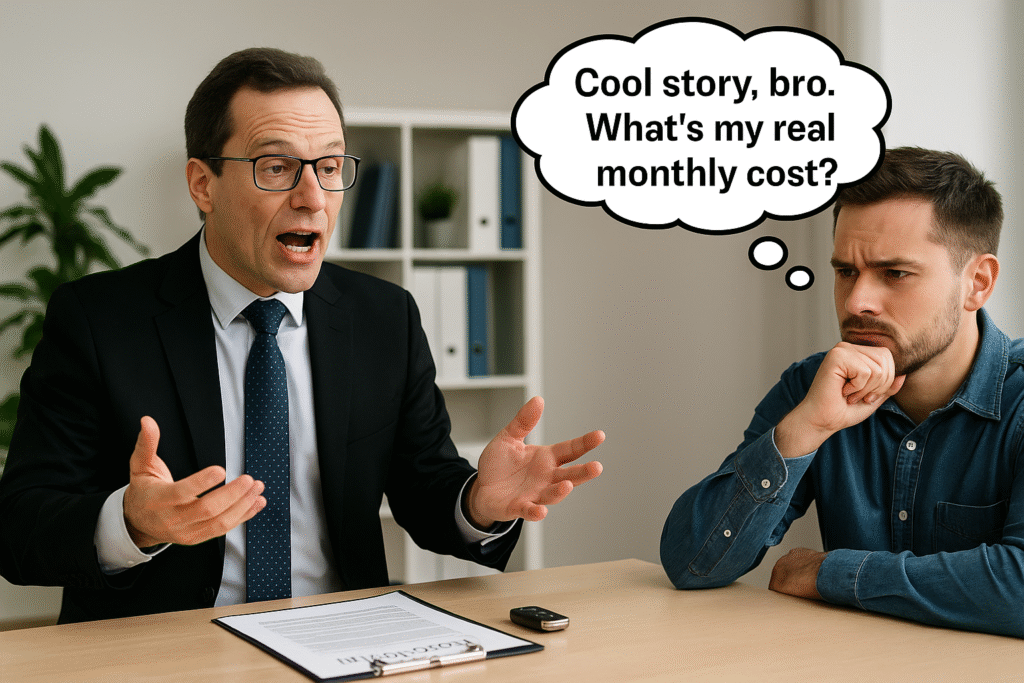The Best Car Lease Strategy? Focus on the Bottom Line

Car leases can be overwhelming. But when it comes down to it, the best car lease strategy is simple: focus on your effective monthly cost. Forget residuals, money factors, or dealer fees. What matters is the total amount you’ll pay—divided by the number of months.
That’s your effective monthly payment, and it’s the true measure of whether you’re getting a good deal.
Why the Best Car Lease Strategy Ignores the Details
To keep things simple, aim for the 1% Lease-to-Value Ratio. This means your total monthly cost—factoring in taxes, fees, and down payment—should be about 1% of the car’s MSRP.
Let’s say a car has an MSRP of $30,000. A smart lease would cost around $300 per month all-in. If you’re close to that mark, you’re likely on the right track.
This straightforward rule beats getting lost in the weeds every time.
Don’t Let Paperwork Distract You
Dealers love throwing around terms like “acquisition fee,” “residual value,” and “money factor.” These sound important. However, they’re often just tools to distract you.
In truth, those numbers can be manipulated to make the lease look better than it is. Focusing on them too much gives the dealer more room to shift things around.
Instead, stay locked in on your total cost. That’s what determines whether the lease works for your budget.
The Philosophy of Leasing: What vs. Why and How
As a consumer, your job is to keep your eye on the ball. That ball is the “what” of the deal—the bottom-line cost you’ll actually pay.
Dealers, on the other hand, will flood you with the “how” and “why.” They’ll explain how the residual value is calculated, why the money factor is competitive, and how the fees are broken down. It sounds helpful, but it often isn’t.
In fact, the “why” and “how” are strategic distractions. They’re curveballs designed to get your eyes off the real issue. The more they talk about how and why, the more you risk losing focus on the only thing that matters: what the deal actually is.
Remember: you’re not here to justify their numbers. You’re here to evaluate a simple question—is the total cost fair?
I Learned This the Hard Way—Even on a Purchase
Here’s the thing: I once got burned not on a lease—but a purchase. I was so focused on analyzing every little number—the interest rate, fees, and financing terms—that I missed the bigger picture.
Meanwhile, my local Kia dealer pulled a fast one. They slipped in an “effective tax credit” trick that cut $1,200 off my trade-in value, even though we had already agreed on a number.
Because I was distracted by the fine print, I didn’t realize the bottom line had changed until it was too late.
That experience taught me a valuable lesson: whether you’re leasing or buying, don’t get caught up in the weeds.
Play Dumb—On Purpose
You don’t need to prove how smart you are about leasing. In fact, telling a dealer that you “know all about money factors” gives them more ways to muddy the waters.
Here’s a better approach:
- Set your target monthly cost
- Stick to it
- Walk away if they can’t meet it
That’s it. No need to get fancy.
Keep Your Eyes on the Ball
A lease is just a long-term rental. You’re paying for the depreciation, plus some profit for the dealer and lender.
Whether the residual is 55% or 60% doesn’t matter if your bottom line is right.
Let the dealer juggle the numbers. Your job is to keep it simple:
- What’s the total cost?
- How does that break down monthly?
Everything else is just noise.
